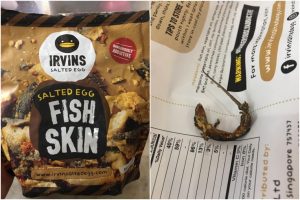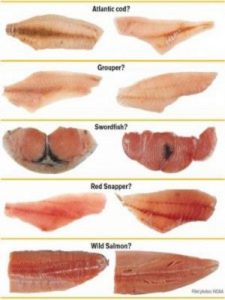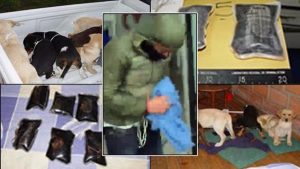To the chagrin of his co-hosts, Fox and Friends presenter Pete Hegseth told the show’s audience Sunday morning that he hasn’t washed his hands in a decade.
 Katherine Hignett of Newsweek writes the revelation came after co-hosts Ed Henry and Jedediah Bila questioned Hegseth’s off-camera consumption of pizza left out after National Pizza Day Saturday. Hegseth had argued that pizza “lasts for a long time.”
Katherine Hignett of Newsweek writes the revelation came after co-hosts Ed Henry and Jedediah Bila questioned Hegseth’s off-camera consumption of pizza left out after National Pizza Day Saturday. Hegseth had argued that pizza “lasts for a long time.”
Bila then quipped Hegseth “might take a chomp out of” anything on a table “that’s not nailed down”—including mugs.
“My 2019 resolution is to say things on air that I say off air… I don’t think I’ve washed my hands for 10 years. Really, I don’t really wash my hands ever,” Hegseth continued, prompting laughter from his co-hosts.
“Someone help me,” Bila said. “Oh man.”
“I inoculate myself. Germs are not a real thing. I can’t see them. Therefore the’re not real,” Hegseth said.
“So you’re becoming immune to all of the bacteria,” Bila replied, rolling her eyes. “My dad has that theory too.”
Hegseth later shared a Tweet in support of his unusual concept of health and hygiene with the hashtag “DontWash.”
 But the Centers for Disease Control and Prevention states that handwashing is a vital way to prevent the transmission of disease. By washing your hands—especially after using the bathroom—you prevent the spread of harmful bacteria like Salmonella and E.coli that can persist in tiny, invisible particles of human feces.
But the Centers for Disease Control and Prevention states that handwashing is a vital way to prevent the transmission of disease. By washing your hands—especially after using the bathroom—you prevent the spread of harmful bacteria like Salmonella and E.coli that can persist in tiny, invisible particles of human feces.
It’s also important to wash your hands after handling raw meat, as this can harbor germs leftover from animal feces.
“A single gram of human feces—which is about the weight of a paper clip—can contain one trillion germs,” the CDC reports.
Filion, K., KuKanich, K.S., Chapman, B., Hardigree, M.K., and Powell, D.A. 2011. Observation-based evaluation of hand hygiene practices and the effects of an intervention at a public hospital cafeteria. American Journal of Infection Control 39(6): 464-470.
Background
Hand hygiene is important before meals, especially in a hospital cafeteria where patrons may have had recent contact with infectious agents. Few interventions to improve hand hygiene have had measureable success. This study was designed to use a poster intervention to encourage hand hygiene among health care workers (HCWs) and hospital visitors (HVs) upon entry to a hospital cafeteria.
Methods
Over a 5-week period, a poster intervention with an accessible hand sanitizer unit was deployed to improve hand hygiene in a hospital cafeteria. The dependent variable observed was hand hygiene attempts. Study phases included a baseline, intervention, and follow-up phase, with each consisting of 3 randomized days of observation for 3 hours during lunch.
Results
During the 27 hours of observation, 5,551 participants were observed, and overall hand hygiene frequency was 4.79%. Hygiene attempts occurred more frequently by HCWs than HVs (P = .0008) and females than males (P = .0281). Hygiene attempts occurred more frequently after poster introduction than baseline (P = .0050), and this improvement was because of an increase in frequency of HV hand hygiene rather than HCW hand hygiene.
Conclusion
The poster intervention tool with easily accessible hand sanitizer can improve overall hand hygiene performance in a US hospital cafeteria.
Wilson, S.M., Jacob, C.J. and Powell, D.A. 2011. Behavior-change interventions to improve hand hygiene practice: A review. Critical Public Health 21: 119-127.
http://www.informaworld.com/smpp/content~content=a934338802~db=all~jumptype=rss
Despite the role of hand hygiene in preventing infectious disease, compliance remains low. Education and training are often cited as essential to developing and maintaining hand-hygiene compliance, but generally have not produced sustained improvements. Consequently, this literature review was conducted to identify alternative interventions for compelling change in hand-hygiene behavior. Of those, interventions employing social pressures have demonstrated varying influence on an individual’s behavior, while interventions that focus on organizational culture have demonstrated positive results. However, recent research indicates that handwashing is a ritualized behavior mainly performed for self-protection. Therefore, interventions that provoke emotive sensations (e.g., discomfort, disgust) or use social marketing may be the most effective.












